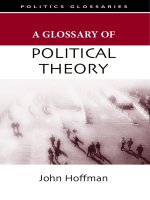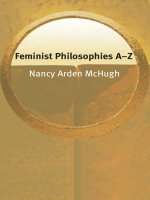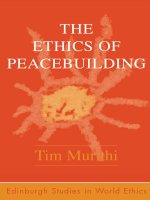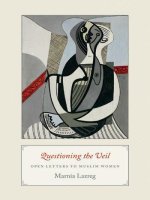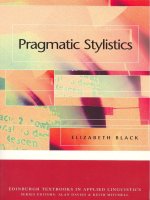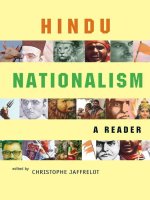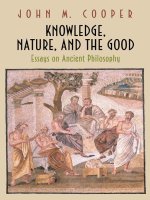princeton university press trigonometric delights mar 1998
Bạn đang xem bản rút gọn của tài liệu. Xem và tải ngay bản đầy đủ của tài liệu tại đây (6.92 MB, 240 trang )
Trigonometric Delights
Eli Maor
p rinceton university p ress
•
p rinceton, new jersey
Copyright © 1998 by Princeton University Press
Published by Princeton University Press, 41 William Street,
Princeton, New Jersey 08540
In the United Kingdom: Princeton University Press, Chichester,
West Sussex
All rights reserved
Maor, Eli.
Trigonometric delights / Eli Maor.
p. cm.
Includes bibliographical references and index.
ISBN 0-691-05754-0 (alk. paper)
1. Trigonometry. I. Title.
QA531.M394 1998
516.24 2—dc21
97-18001
This book has been composed in Times Roman
Princeton University Press books are printed on acid-free paper and
meet the guidelines for permanence and durability of the Committee
on Production Guidelines for Book Longevity of the Council on
Library Resources
Printed in the United States of America
10 9 8 7 6 5 4 3 2 1
I
n memory of my uncles
Ernst C. Stiefel (1907–1997)
Rudy C. Stiefel (1917–1989)
Contents
Preface
xi
Prologue: Ahmes the Scribe, 1650 b.c.
3
Recr ionalMat
eat
hemat in AncientEg pt
ics
y
11
1.
Angles
15
2.
Chords
20
Pl
impt 322: The EariestTr onomet ic Tabl
on
l
ig
r
e?
30
3.
Six Functions Come of Age
35
Johann Măler al Reg
u l , ias
iomont
anus
41
4.
50
Trigonometry Becomes Analytic
Fr
anỗois Vi`t
ee
56
5.
63
Measuring Heaven and Earth
Abr
aham De Moivr
e
80
6.
Two Theorems from Geometry
87
7.
Epicycloids and Hypocycloids
95
Mar Ag
ia nesi and Her“Wit
ch”
108
8.
Variations on a Theme by Gauss
112
9.
Had Zeno Only Known This!
117
10.
11.
sin x /x
A Remarkable Formula
129
139
Jul Lissajous and His Fig es
es
ur
145
12.
tan x
150
13.
A Mapmaker’s Paradise
165
14.
sin x = 2: Imaginary Trigonometry
181
Edmund Landau: The Mast
erRig ist
or
192
15.
198
Fourier’s Theorem
viii
CONTENTS
Appendixes
211
1.
Let’s Revive an Old Idea
213
2.
Barrow’s Integration of sec φ
218
3.
Some Trigonometric Gems
220
4.
Some Special Values of sin α
222
Bibliography
225
Credits for Illustrations
229
Index
231
Go to Preface
Title page of the Rhind Papyrus.
Preface
There is perhaps nothing which so occupies the middle
position of mathematics as trigonometry.
—J. F. Herbart (1890)
This book is neither a textbook of trigonometry—of which there
are many—nor a comprehensive history of the subject, of which
there is almost none. It is an attempt to present selected topics
in trigonometry from a historic point of view and to show their
relevance to other sciences. It grew out of my love affair with
the subject, but also out of my frustration at the way it is being
taught in our colleges.
First, the love affair. In the junior year of my high school we
were fortunate to have an excellent teacher, a young, vigorous
man who taught us both mathematics and physics. He was a
no-nonsense teacher, and a very demanding one. He would not
tolerate your arriving late to class or missing an exam—and you
better made sure you didn’t, lest it was reflected on your report
card. Worse would come if you failed to do your homework or
did poorly on a test. We feared him, trembled when he reprimanded us, and were scared that he would contact our parents.
Yet we revered him, and he became a role model to many of
us. Above all, he showed us the relevance of mathematics to
the real world—especially to physics. And that meant learning
a good deal of trigonometry.
He and I have kept a lively correspondence for many years,
and we have met several times. He was very opinionated, and
whatever you said about any subject–mathematical or otherwise—he would argue with you, and usually prevail. Years after I finished my university studies, he would let me understand that he was still my teacher. Born in China to a family
that fled Europe before World War II, he emigrated to Israel
and began his education at the Hebrew University of Jerusalem,
only to be drafted into the army during Israel’s war of independence. Later he joined the faculty of Tel Aviv University and
was granted tenure despite not having a Ph.D.—one of only two
faculty members so honored. In 1989, while giving his weekly
xii
PREFACE
lecture on the history of mathematics, he suddenly collapsed
and died instantly. His name was Nathan Elioseph. I miss him
dearly.
And now the frustration. In the late 1950s, following the early
Soviet successes in space (Sputnik I was launched on October
4, 1957; I remember the date—it was my twentieth birthday)
there was a call for revamping our entire educational system,
especially science education. New ideas and new programs suddenly proliferated, all designed to close the perceived technological gap between us and the Soviets (some dared to question
whether the gap really existed, but their voices were swept aside
in the general frenzy). These were the golden years of American science education. If you had some novel idea about how
to teach a subject—and often you didn’t even need that much—
you were almost guaranteed a grant to work on it. Thus was born
the “New Math”—an attempt to make students understand what
they were doing, rather than subject them to rote learning and
memorization, as had been done for generations. An enormous
amount of time and money was spent on developing new ways
of teaching math, with emphasis on abstract concepts such as set
theory, functions (defined as sets of ordered pairs), and formal
logic. Seminars, workshops, new curricula, and new texts were
organized in haste, with hundreds of educators disseminating
the new ideas to thousands of bewildered teachers and parents.
Others traveled abroad to spread the new gospel in developing
countries whose populations could barely read and write.
Today, from a distance of four decades, most educators agree
that the New Math did more harm than good. Our students
may have been taught the language and symbols of set theory,
but when it comes to the simplest numerical calculations they
stumble—with or without a calculator. Consequently, many high
school graduates are lacking basic algebraic skills, and, not surprisingly, some 50 percent of them fail their first college-level
calculus course. Colleges and universities are spending vast resources on remedial programs (usually made more palatable
by giving them some euphemistic title like “developmental program” or “math lab”), with success rates that are moderate at
best.
Two of the casualties of the New Math were geometry and
trigonometry. A subject of crucial importance in science and
engineering, trigonometry fell victim to the call for change. Formal definitions and legalistic verbosity—all in the name of mathematical rigor—replaced a real understanding of the subject.
Instead of an angle, one now talks of the measure of an angle;
instead of defining the sine and cosine in a geometric context—
xiii
PREFACE
as ratios of sides in a triangle or as projections of the unit circle on the x- and y-axes—one talks about the wrapping function
from the reals to the interval −1 1 . Set notation and set language have pervaded all discussion, with the result that a relatively simple subject became obscured in meaningless formalism.
Worse, because so many high school graduates are lacking basic algebraic skills, the level and depth of the typical trigonometry textbook have steadily declined. Examples and exercises are
often of the simplest and most routine kind, requiring hardly
anything more than the memorization of a few basic formulas.
Like the notorious “word problems” of algebra, most of these
exercises are dull and uninspiring, leaving the student with a
feeling of “so what?” Hardly ever are students given a chance
to cope with a really challenging identity, one that might leave
them with a sense of accomplishment. For example,
1. Prove that for any number x,
x
x
x
sin x
= cos cos cos ·
x
2
4
8
This formula was discovered √ Euler. Substituting x = π/2, usby
ing the fact that cos π/4 = 2/2 and repeatedly applying the
half-angle formula for the cosine, we get the beautiful formula
2
2
=
Ã
2
2+
2
2
Ã
2+
2+
2
2
Ã
discovered in 1593 by Franỗois Vi`te in a purely geometric way.
e
2. Prove that in any triangle,
β
γ
α
cos cos
2
2
2
sin 2α + sin 2β + sin 2γ = 4 sin α sin β sin γ
sin α + sin β + sin γ = 4 cos
3β
3γ
3α
cos
cos
2
2
2
tan α + tan β + tan γ = tan α tan β tan γ
sin 3α + sin 3β + sin 3γ = −4 cos
(The last formula has some unexpected consequences, which we
will discuss in chapter 12.) These formulas are remarkable for
their symmetry; one might even call them “beautiful”—a kind
word for a subject that has undeservedly gained a reputation
of being dry and technical. In Appendix 3, I have collected
some additional beautiful formulas, recognizing of course that
“beauty” is an entirely subjective trait.
xiv
PREFACE
“Some students,” said Edna Kramer in The Nature and Growth
of Modern Mathematics, consider trigonometry “a glorified geometry with superimposed computational torture.” The present
book is an attempt to dispel this view. I have adopted a historical approach, partly because I believe it can go a long way
to endear mathematics–and science in general—to the students.
However, I have avoided a strict chronological presentation of
topics, selecting them instead for their aesthetic appeal or their
relevance to other sciences. Naturally, my choice of subjects reflects my own preferences; numerous other topics could have
been selected.
The first nine chapters require only basic algebra and trigonometry; the remaining chapters rely on some knowledge of
calculus (no higher than Calculus II). Much of the material
should thus be accessible to high school and college students.
Having this audience in mind, I limited the discussion to plane
trigonometry, avoiding spherical trigonometry altogether (although historically it was the latter that dominated the subject
at first). Some additional historical material–often biographical
in nature—is included in eight “sidebars” that can be read independently of the main chapters. If even a few readers will be
inspired by these chapters, I will consider myself rewarded.
My dearest thanks go to my son Eyal for preparing the illustrations; to William Dunham of Muhlenberg College in Allentown, Pennsylvania, and Paul J. Nahin of the University of New
Hampshire for their very thorough reading of the manuscript; to
the staff of Princeton University Press for their meticulous care
in preparing the work for print; to the Skokie Public Library,
whose staff greatly helped me in locating rare and out-of-print
sources; and last but not least to my dear wife Dalia for constantly encouraging me to see the work through. Without their
help, this book would have never seen the light of day.
Note: frequent reference is made
Dictionary of Scientific Biography
Gillispie, ed.; New York: Charles
To avoid repetition, this work will
Skokie, Illinois
February 20, 1997
Go to Prologue
throughout this book to the
(16 vols.; Charles Coulston
Scribner’s Sons, 1970–1980).
be referred to as DSB.
PROLOGUE
Ahmes the Scribe, 1650
B.C.
Soldiers: from the summit of yonder pyramids forty
centuries look down upon you.
—Napoleon Bonaparte in Egypt, July 21, 1798
In 1858 a Scottish lawyer and antiquarian, A. Henry Rhind
(1833–1863), on one of his trips to the Nile valley, purchased a
document that had been found a few years earlier in the ruins
of a small building in Thebes (near present-day Luxor) in Upper Egypt. The document, known since as the Rhind Papyrus,
turned out to be a collection of 84 mathematical problems dealing with arithmetic, primitive algebra, and geometry.1 After
Rhind’s untimely death at the age of thirty, it came into the
possession of the British Museum, where it is now permanently
displayed. The papyrus as originally found was in the form of
a scroll 18 feet long and 13 inches wide, but when the British
Museum acquired it some fragments were missing. By a stroke
of extraordinary luck these were later found in the possession
of the New-York Historical Society, so that the complete text is
now available again.
Ancient Egypt, with its legendary shrines and treasures,
has always captivated the imagination of European travelers.
Napoleon’s military campaign in Egypt in 1799, despite its
ultimate failure, opened the country to an army of scholars, antiquarians, and adventurers. Napoleon had a deep interest in
culture and science and included on his staff a number of scholars in various fields, among them the mathematician Joseph
Fourier (about whom we will have more to say later). These
scholars combed the country for ancient treasures, taking with
them back to Europe whatever they could lay their hands on.
Their most famous find was a large basalt slab unearthed near
the town of Rashid—known to Europeans as Rosetta—at the
western extremity of the Nile Delta.
The Rosetta Stone, which like the Rhind Papyrus ended up
in the British Museum, carries a decree issued by a council
4
PROLOGUE
of Egyptian priests during the reign of Ptolemy V (195 b.c.)
and is recorded in three languages: Greek, demotic, and hieroglyphic (picture script). The English physicist Thomas Young
(1773–1829), a man of many interests who is best known for his
wave theory of light, was the first to decipher the inscription
on the stone. By comparing the recurrence of similar groups
of signs in the three scripts, he was able to compile a primitive dictionary of ancient Egyptian words. His work was completed in 1822 by the famous French Egyptologist, Jean Franỗois
Champollion (17901832), who identied the name Cleopatra
in the inscription. Champollion’s epochal work enabled scholars
to decipher numerous Egyptian texts written on papyri, wood,
and stone, among them several scrolls dealing with mathematics. The longest and most complete of the mathematical texts is
the Rhind Papyrus.
August Eisenlohr, a German scholar, was the first to translate the Rhind Papyrus into a modern language (Leipzig, 1877);
an English translation by Thomas Eric Peet appeared in London in 1923.2 But the most extensive edition of the work was
completed in 1929 by Arnold Buffum Chase (1845–1932), an
American businessman whose trip to Egypt in 1910 turned him
into an Egyptologist. It is through this edition that the Rhind
Papyrus became accessible to the general public.3
The papyrus is written from right to left in hieratic (cursive)
script, as opposed to the earlier hieroglyphic or pictorial script.
The text is in two colors—black and red—and is accompanied
by drawings of geometric shapes. It is written in the hand of a
scribe named A’h-mose, commonly known to modern writers as
Ahmes. But it is not his own work; he copied it from an older
manuscript, as we know from his own introduction:
This book was copied in the year 33, in the fourth month of the
inundation season, under the majesty of the king of Upper and
Lower Egypt, ‘A-user-Re’, endowed with life, in likeness to writings
of old made in the time of the king of Upper and Lower Egypt,
Ne-ma’et-Re’. It is the scribe A’h-mose who copies this writing.4
The first king mentioned, ‘A-user-Re’, has been identified as a
member of the Hyksos dynasty who lived around 1650 b.c.; the
second king, Ne-ma’et-Re’, was Amenem-het III, who reigned
from 1849 to 1801 b.c. during what is known as the Middle
Kingdom. Thus we can fix the dates of both the original work
and its copy with remarkable accuracy: it was written nearly four
thousand years ago and is one of the earliest, and by far the most
extensive, ancient mathematical document known to us.5
AHMES THE SCRIBE
5
The work opens with a grand vision of what the author plans
to offer: a “complete and thorough study of all things, insight
into all that exists, knowledge of all secrets.”6 Even if these
promises are not quite fulfilled, the work gives us an invaluable
insight into early Egyptian mathematics. Its 84 problems deal
with arithmetic, verbal algebra (finding an unknown quantity),
mensuration (area and volume calculations), and even arithmetic and geometric progressions. To anyone accustomed to
the formal structure of Greek mathematics—definitions, axioms,
theorems, and proofs—the content of the Rhind Papyrus must
come as a disappointment: there are no general rules that apply
to an entire class of problems, nor are the results derived logically from previously established facts. Instead, the problems
are in the nature of specific examples using particular numbers.
Mostly they are “story problems” dealing with such mundane
matters as finding the area of a field or the volume of a granary, or how to divide a number of loaves of bread among so
many men. Apparently the work was intended as a collection of
exercises for use in a school of scribes, for it was the class of
royal scribes to whom all literary tasks were assigned—reading,
writing, and arithmetic, our modern “three R’s.”7 The papyrus
even contains a recreational problem of no apparent practical
use, obviously meant to challenge and entertain the reader (see
p. 11).
The work begins with two tables: a division table of 2 by all
odd integers from 3 to 101, and a division table of the integers
1 through 9 by 10. The answers are given in unit fractions—
fractions whose numerator is 1. For some reason this was the
only way the Egyptians knew of handling fractions; the one exception was 2/3, which was regarded as a fraction in its own
right. A great amount of effort and ingenuity was spent in decomposing a fraction into a sum of unit fractions. For example,
the result of dividing 6 by 10 is given as 1/2 + 1/10, and that of
7 by 10 as 2/3 + 1/30.8 The Egyptians, of course, did not use
our modern notation for fractions; they indicated the reciprocal
of an integer by placing a dot (or an oval in hieroglyphic script)
over the symbol for that integer. There was no symbol for addition; the unit fractions were simply written next to each other,
their summation being implied.9
The work next deals with arithmetic problems involving subtraction (called “completion”) and multiplication, and problems
where an unknown quantity is sought; these are known as aha
problems because they often begin with the word “h” (pronounced “aha” or “hau”), which probably means “the quantity”
(to be found).10 For example, Problem 30 asks: “If the scribe
6
PROLOGUE
says, What is the quantity of which 2/3 + 1/10 will make 10,
let him hear.” The answer is given as 13 + 1/23, followed by a
proof (today we would say a “check”) that this is indeed the
correct answer.
In modern terms, Problem 30 amounts to solving the equation
2/3 + 1/10 x = 10. Linear equations of this kind were solved by
the so-called “rule of false position”: assume some convenient
value for x, say 30, and substitute it in the equation; the left
side then becomes 23, instead of the required 10. Since 23 must
be multiplied by 10/23 to get 10, the correct solution will be
10/23 times the assumed value, that is, x = 300/23 = 13 + 1/23.
Thus, some 3,500 years before the creation of modern symbolic
algebra, the Egyptians were already in possession of a method
that allowed them, in effect, to solve linear equations.11
Problems 41 through 60 are geometric in nature. Problem 41
simply says: “Find the volume of a cylindrical granary of diameter 9 and height 10.” The solution follows: “Take away 1/9 of
9, namely, 1; the remainder is 8. Multiply 8 times 8; it makes
64. Multiply 64 times 10; it makes 640 cubed cubits.” (The author then multiplies this result by 15/2 to convert it to hekat, the
standard unit of volume used for measuring grain; one hekat has
been determined to equal 292.24 cubic inches or 4.789 liters.)12
Thus, to find the area of the circular base, the scribe replaced it
by a square of side 8/9 of the diameter. Denoting the diameter
by d, this amounts to the formula A = 8/9 d 2 = 64/81 d 2 .
If we compare this to the formula A = πd 2 /4, we find that the
Egyptians used the value π = 256/81 = 3 16049, in error of only
0.6 percent of the true value. A remarkable achievement!13
4
4
4
Of particular interest to us are Problems 56–60. They deal with
that most famous of Egyptian monuments, the pyramids, and all
use the word seked (see fig. 1).14 What this word means we shall
soon find out.
Problem 56 says: “If a pyramid is 250 cubits high and the side
of its base 360 cubits long, what is its seked?” Ahmes’s solution
follows:
Take 1/2 of 360; it makes 180. Multiply 250 so as to get 180; it makes
1/2 1/5 1/50 of a cubit. A cubit is 7 palms. Multiply 7 by 1/2 1/5 1/50:
1
1/2
1/5
1/50
7
3
1
1/2
1/3
1/10
1/15
1/25
7
AHMES THE SCRIBE
Fig. 1. Problem 56 of the Rhind Papyrus.
1
The seked is 5 25 palms [that is, 3 + 1/2 + 1 + 1/3 + 1/15 + 1/10 +
1 15
1/25 = 5 25 ].
Let us analyze the solution. Clearly 1/2 of 360, or 180, is half
the side of the square base of the pyramid (fig. 2). “Multiply
250 so as to get 180” means to find a number x such that 250
times x equals 180. This gives us x = 180/250 = 18/25. But
Egyptian mathematics required that all answers be given in unit
fractions; and the sum of the unit fractions 1/2, 1/5, and 1/50 is
indeed 18/25. This number, then, is the ratio of half the side of
the base of the pyramid to its height, or the run-to-rise ratio of
its face. In effect, the quantity that Ahmes found, the seked, is
the cotangent of the angle between the base of the pyramid and its
face.16
Two questions immediately arise: First, why didn’t he find the
reciprocal of this ratio, or the rise-to-run ratio, as we would do
today? The answer is that when building a vertical structure, it
is natural to measure the horizontal deviation from the vertical
line for each unit increase in height, that is, the run-to-rise ratio.
This indeed is the practice in architecture, where one uses the
h
θ
a
a
Fig. 2. Square-based
pyramid.
8
PROLOGUE
term batter to measure the inward slope of a supposedly vertical
wall.
Second, why did Ahmes go on to multiply his answer by 7?
For some reason the pyramid builders measured horizontal distances in “palms” or “hands” and vertical distances in cubits.
1
One cubit equals 7 palms. Thus the required seked, 5 25 , gives
the run-to-rise ratio in units of palms per cubit. Today, of course,
we think of these ratios as a pure numbers.
Why was the run-to-rise ratio considered so important as
to deserve a special name and four problems devoted to it in
the papyrus? The reason is that it was crucial for the pyramid
builders to maintain a constant slope of each face relative to
the horizon. This may look easy on paper, but once the actual
construction began, the builders constantly had to check their
progress to ensure that the required slope was maintained. That
is, the seked had to be the same for each one of the faces.
Problem 57 is the inverse problem: we are given the seked and
the side of a base and are asked to find the height. Problems
58 and 59 are similar to Problem 56 and lead to a seked of 5 1
4
palms (per cubit), except that the answer is given as 5 palms and
1 “finger” (there being 4 fingers in a palm). Finally, Problems 60
asks to find the seked of a pillar 30 cubits high whose base is 15
cubits. We do not know if this pillar had the shape of a pyramid
or a cylinder (in which case 15 is the diameter of the base); in
either case the answer is 1/4.
The seked found in Problem 56, namely 18/25 (in dimensionless units) corresponds to an angle of 54◦ 15 between the base
and face. The seked found in Problems 58–59, when converted
back to dimensionless units, is 5 1 7 or 3/4, corresponding to
4
an angle of 53◦ 8 . It is interesting to compare these figures to
the actual angles of some of pyramids at Giza:17
Cheops:
Chephren:
Mycerinus:
51◦ 52
52◦ 20
50◦ 47
The figures are in close agreement. As for the pillar in Problem
60, its angle is much larger, as of course we expect of such a
structure: φ = cot−1 1/4 = 75◦ 58 .
It would be ludicrous, of course, to claim that the Egyptians
invented trigonometry. Nowhere in their writings does there
appear the concept of an angle, so they were in no position to
formulate quantitative relations between the angles and sides
of a triangle. And yet (to quote Chase) “at the beginning of the
18th century b.c., and probably a thousand years earlier, when
the great pyramids were built, the Egyptian mathematicians
AHMES THE SCRIBE
9
had some notion of referring a right triangle to a similar triangle, one of whose sides was a unit of measure, as a standard.”
We may therefore be justified in crediting the Egyptians with
a crude knowledge of practical trigonometry—perhaps “prototrigonometry” would be a better word—some two thousand
years before the Greeks took up this subject and transformed it
into a powerful tool of applied mathematics.
Notes and Sources
1. The papyrus also contains three fragmentary pieces of text unrelated to mathematics, which some authors number as Problems 85, 86,
and 87. These are described in Arnold Chase, The Rhind Mathematical
Papyrus: Free Translation and Commentary with Selected Photographs,
Transcriptions, Transliterations and Literal Translations (Reston, VA:
National Council of Teachers of Mathematics, 1979), pp. 61–62.
2. The Rhind Mathematical Papyrus, British Museum 10057 and
10058: Introduction, Transcription, Translation and Commentary (London, 1923).
3. Chase, Rhind Mathematical Papyrus. This extensive work is a
reprint, with minor changes, of the same work published by the Mathematical Association of America in two volumes in 1927 and 1929. It
contains detailed commentary and an extensive bibliography, as well
as numerous color plates of text material. For a biographical sketch
of Chase, see the article “Arnold Buffum Chase” in the American
Mathematical Monthly, vol. 40 (March 1933), pp. 139–142. Other good
sources on Egyptian mathematics are Richard J. Gillings, Mathematics in the Time of the Pharaohs (1972; rpt. New York: Dover, 1982);
George Gheverghese Joseph, The Crest of the Peacock: Non-European
Roots of Mathematics (Harmondsworth, U.K.: Penguin Books, 1991),
chap. 3; Otto Neugebauer, The Exact Sciences in Antiquity (1957; rpt.
New York: Dover, 1969), chap. 4; and Baertel L. van der Waerden,
Science Awakening, trans. Arnold Dresden (New York: John Wiley,
1963), chap. 1.
4. Chase, Rhind Mathematical Papyrus, p. 27. The royal title “Re” is
pronounced “ray.”
5. Another important document from roughly the same period is the
Golenishchev or Moscow Papyrus, a scroll about the same length as the
Rhind Papyrus but only three inches wide. It contains 25 problems and
is of poorer quality than the Rhind Papyrus. See Gillings, Mathematics,
pp. 246–247; Joseph, Crest of the Peacock, pp. 84–89; van der Waerden, Science Awakening, pp. 33–35; and Carl B. Boyer, A History of
Mathematics (1968; rev. ed. New York: John Wiley, 1989), pp. 22–24.
References to other Egyptian mathematical documents can be found in
Chase, Rhind Mathematical Papyrus, p. 67; Gillings, Mathematics, chaps.
9, 14, and 22; Joseph, Crest of the Peacock, pp. 59–61, 66–67 and 78–79;
and Neugebauer, Exact Sciences, pp. 91–92;
10
PROLOGUE
6. As quoted by van der Waerden, Science Awakening, p. 16, who
apparently quoted from Peet. This differs slightly from Chase’s free
translation (Rhind Mathematical Papyrus, p. 27).
7. Van der Waerden, Science Awakening, pp. 16–17.
8. Note that the decomposition is not unique: 7/10 can also be written as 1/5 + 1/2.
9. For a more detailed discussion of the Egyptians’ use of unit fractions, see Boyer, History of Mathematics, pp. 15–17; Chase, Rhind Mathematical Papyrus, pp. 9–17; Gillings, Mathematics, pp. 20–23; and van
der Waerden, Science Awakening, pp. 19–26.
10. Chase, Rhind Mathematical Papyrus, pp. 15–16; van der Waerden,
Science Awakening, pp. 27–29.
11. See Gillings, Mathematics, pp. 154–161.
12. Chase, Rhind Mathematical Papyrus, p. 46. For a discussion of
Egyptian measures, see ibid., pp. 18–20; Gillings, Mathematics, pp. 206–
213.
13. The Egyptian value can be conveniently written as 4/3 4 .
Gillings (Mathematics, pp. 139–153) gives a convincing theory as to
how Ahmes derived the formula A = 8/9 d 2 and credits him as being “the first authentic circle-squarer in recorded history!” See also
Chase, Rhind Mathematical Papyrus, pp. 20–21, and Joseph, Crest of
the Peacock, pp. 82–84 and 87–89. Interestingly the Babylonians, whose
mathematical skills generally exceeded those of the Egyptians, simply equated the area of a circle to the area of the inscribed regular
hexagon, leading to π = 3; see Joseph, Crest of the Peacock, p. 113.
14. Pronounced “saykad” or “sayket.”
15. Chase, Rhind Mathematical Papyrus, p. 51.
16. See, however, ibid., pp. 21–22 for an alternative interpretation.
17. Gillings, Mathematics, p. 187.
Go to Sidebar A
Recreational Mathematics in
Ancient Egypt
P
roblem 79 of the Rhind Papyrus says (fig. 3):1
A house inventory:
houses
a
7
1
2,801
cats
49
2
5,602
mice
343
4
11,204
spelt
2,301b
hekat
Total
19,607
16,807
Total
19,607
a
The Egyptian word for “cat” is myw; when the missing vowels are inserted, this
becomes meey’a uw.
b
Obviously Ahmes made a mistake here. The correct entry should be 2,401.
What is the meaning behind this cryptic verse? Clearly we
have before us a geometric progression whose initial term and
common ratio are both 7, and the scribe shows us how to find its
sum. But as any good teacher would do to break the monotony
of a routine math class, Ahmes embellishes the exercise with a
little story which might be read like this: There are seven houses;
in each house there are seven cats; each cat eats seven mice;
each mouse eats seven ears of spelt; each ear of spelt produces
seven hekat of grain. Find the total number of items involved.
The right hand column clearly gives the terms of the progression 7 72 73 74 75 followed by their sum, 19,607 (whether
the mistaken entry 2,301 was Ahmes’s own error in copying
or whether it had already been in the original document, we
shall never know). But now Ahmes plays his second card: in the
left-hand column he shows us how to obtain the answer in a
shorter, “clever” way; and in following it we can see the Egyptian method of multiplication at work. The Egyptians knew that
any integer can be represented as a sum of terms of the geometric progression 1 2 4 8
and that the representation
is unique (this is precisely the representation of an integer in
terms of the base 2, the coefficients, or “binary digits,” being 0
and 1). To multiply, say, 13 by 17, they only had to write one of
the multipliers, say 13, as a sum of powers of 2, 13 = 1 + 4 + 8,
12
RECREATIONAL MATHEMATICS
Fig. 3. Problem 79 of the Rhind Papyrus.
multiply each power by the other multiplier, and add the results:
13 × 17 = 1 × 17 + 4 × 17 + 8 × 17 = 17 + 68 + 136 = 221. The
work can be conveniently done in a tabular form:
17 × 1 =
17 *
× 2 =
34
× 4 =
68 *
× 8 = 136 *
The astrisks indicate the powers to be added. Thus the Egyptians
could do any multiplication by repeated doubling and adding. In
all the Egyptian mathematical writings known to us, this practice
RECREATIONAL MATHEMATICS
13
is always followed; it was as basic to the Egyptian scribe as the
multiplication table is to a pupil today.
So where does 2,801, the first number in the left-hand column
of Problem 79, come from? Here Ahmes uses a property of geometric progressions with which the Egyptians were familiar: the
sum of the first n terms of a geometric progression with the same
initial term and common ratio is equal to the common ratio multiplied by one plus the sum of the first n − 1 terms; in modern
+ an = a 1 + a + a 2 +
+ an−1 .
notation, a + a2 + a3 +
This sort of “recursion formula” enabled the Egyptian scribe to
reduce the summation of one geometric progression to that of
another one with fewer (and smaller) terms. To find the sum of
the progression 7 + 49 + 343 + 2 401 + 16 807, Ahmes thought
of it as 7 × 1 + 7 + 49 + 343 + 2 401 ; since the sum of the terms
inside the parentheses is 2,801, all he had to do was to multiply this number by 7, thinking of 7 as 1 + 2 + 4. This is what the
left-hand column shows us. Note that this column requires only
three steps, compared to the five steps of the “obvious” solution
shown in the right-hand column; clearly the scribe included this
exercise as an example in creative thinking.
One may ask: why did Ahmes choose the common ratio 7?
In his excellent book, Mathematics in the Times of the Pharaohs,
Richard J. Gillings answers this question as follows: “The number 7 often presents itself in Egyptian multiplication because,
by regular doubling, the first three multipliers are always 1, 2,
4, which add to 7.”2 This explanation, however, is somewhat
unconvincing, for it would equally apply to 3 = 1 + 2 , to 15
( = 1 + 2 + 4 + 8), and in fact to all integers of the form 2n − 1. A
more plausible explanation might be that 7 was chosen because
a larger number would have made the calculation too long, while
a smaller one would not have illustrated the rapid growth of the
progression: had Ahmes used 3, the final answer (363) may not
have been “sensational” enough to impress the reader.
The dramatic growth of a geometric progression has fascinated mathematicians throughout the ages; it even found its
way into the folklore of some cultures. An old legend has it
that the king of Persia was so impressed by the game of chess
that he wished to reward its inventor. When summoned to the
royal palace, the inventor, a poor peasant from a remote corner of the kingdom, merely requested that one grain of wheat
be put on the first square of the chessboard, two grains on
the second square, four grains on the third, and so on until
all 64 squares were covered. Surprised by the modesty of this
request, the king ordered his servants to bring a few bags of
wheat, and they patiently began to put the grains on the board.
14
RECREATIONAL MATHEMATICS
It soon became clear, however, that not even the entire amount
of grain in the kingdom sufficed to fulfill the request, for the
+ 263 is a staggering
sum of the progression 1 + 2 + 22 +
18,446,744,073,709,551,615—enough to form a line of grain
some two light years long!
Ahmes’s Problem 79 has a strong likeness to an old nursery
rhyme:
As I was going to St. Ives,
I met a man with seven wives;
Every wife had seven sacks,
Every sack had seven cats,
Every cat had seven kits.
Kits, cats, sacks and wives,
How many were going to St. Ives?
In Leonardo Pisano’s (“Fibonacci”) famous work Liber Abaci
(1202) there is a problem which, except for the story involved,
is identical to this rhyme. This has led some scholars to suggest
that Problem 79 “has perpetuated itself through all the centuries
from the times of the ancient Egyptians.”3 To which Gillings
replies: “All the available evidence for this [conclusion] is here
before us, and one is entitled to draw whatever conclusions one
wishes. It is indeed tempting to be able to say to a child, ‘Here is
a nursery rhyme that is nearly 4,000 years old!’ But is it really?
We shall never truly know.”4
Geometric progressions may seem quite removed from trigonometry, but in chapter 9 we will show that the two are indeed
closely related. This will allow us to investigate these progressions geometrically and perhaps justify the adjective “geometric”
that has, for no apparent reason, been associated with them.
Notes and Sources
Go to Chapter 1
1. Arnold Buffum Chase, The Rhind Mathematical Papyrus: Free
Translation and Commentary with Selected Photographs, Transcriptions,
Transliterations and Literal Translations (Reston, Va.: National Council
of Teachers of Mathematics, 1979), p. 136. I have used here Chase’s
literal (rather than free) translation in order to preserve the flavor and
charm of the problem as originally stated. This also includes Ahmes’s
obvious error in the fourth line of the right column. For Chase’s free
translation, see p. 59 of his book.
2. Richard J. Gillings, Mathematics in the Times of the Pharoahs.
(1972; rpt. New York: Dover, 1982), p. 168.
3. L. Rodet as quoted by Chase, Rhind Mathematical Papyrus, p. 59.
4. Gillings, Mathematics, p. 170.
1
Angles
A plane angle is the inclination to one another of two
lines in a plane which meet one another and do not lie
in a straight line.
—Euclid, The Elements, Definition 8.
Geometric entities are of two kinds: those of a strictly qualitative
nature, such as a point, a line, and a plane, and those that can
be assigned a numerical value, a measure. To this last group
belong a line segment, whose measure is its length; a planar
region, associated with its area; and a rotation, measured by its
angle.
There is a certain ambiguity in the concept of angle, for it describes both the qualitative idea of “separation” between two intersecting lines, and the numerical value of this separation—the
measure of the angle. (Note that this is not so with the analogous “separation” between two points, where the phrases line
segment and length make the distinction clear.) Fortunately we
need not worry about this ambiguity, for trigonometry is concerned only with the quantitative aspects of line segments and
angles.1
The common unit of angular measure, the degree, is believed
to have originated with the Babylonians. It is generally assumed
that their division of a circle into 360 parts was based on the
closeness of this number to the length of the year, 365 days.
Another reason may have been the fact that a circle divides naturally into six equal parts, each subtending a chord equal to the
radius (fig. 4). There is, however, no conclusive evidence to support these hypotheses, and the exact origin of the 360-degree
system may remain forever unknown.2 In any case, the system
fitted well with the Babylonian sexagesimal (base 60) numeration system, which was later adopted by the Greeks and used by
Ptolemy in his table of chords (see chapter 2).
As a numeration system, the sexagesimal system is now obsolete, but the division of a circle into 360 parts has survived—
16
CHAPTER ONE
60°
Fig. 4. Regular
hexagon inscribed in a
circle.
not only in angular measure but also in the division of an hour
into 60 minutes and a minute into 60 seconds. This practice is
so deeply rooted in our daily life that not even the ascendancy
of the metric system was able to dispel it, and Florian Cajori’s
statement in A History of Mathematics (1893) is still true today:
“No decimal division of angles is at the present time threatened with adoption, not even in France [where the metric system
originated].”3 Nevertheless, many hand-held calculators have a
grad option in which a right angle equals 100 “gradians,” and
fractional parts of a gradian are reckoned decimally.
The word degree originated with the Greeks. According to
the historian of mathematics David Eugene Smith, they used
the word µoιρα (moira), which the Arabs translated into daraja
(akin to the Hebrew dar’ggah, a step on a ladder or scale); this
in turn became the Latin de gradus, from which came the word
degree. The Greeks called the sixtieth part of a degree the “first
part,” the sixtieth part of that the “second part,” and so on.
In Latin the former was called pars minuta prima (“first small
part”) and the latter pars minuta secunda (“second small part”),
from which came our minute and second.4
In more recent times the radian or circular measure has been
universally adopted as the natural unit of angular measure. One
radian is the angle, measured at the center of a circle, that
subtends an arc length of one radius along the circumference
(fig. 5). Since a complete circle encompasses 2π ≈ 6 28 radii
along the circumference, and each of these radii corresponds to
a central angle of 1 radian, we have 360◦ = 2π radians; hence
1 radian = 360◦ /2π ≈ 57 29◦ . The oft-heard statement that a
radian is a more convenient unit than a degree because it is
17
ANGLES
r
r
θ
r
Fig. 5. Radian angular
measure.
larger, and thus allows us to express angles by smaller numbers,
is simply not true.5 The sole reason for using radians is that it
simplifies many formulas. For example, a circular arc of angular width θ (where θ is in radians) subtends an arc length given
by s = rθ; but if θ is in degrees, the corresponding formula is
s = πrθ/180. Similarly, the area of a circular sector of angular
width θ is A = r 2 θ/2 for θ in radians and A = πr 2 θ/360 for θ
in degrees.6 The use of radians rids these formulas of the “unwanted” factor π/180.
Even more important, the fact that a small angle and its sine
are nearly equal numerically—the smaller the angle, the better the approximation—holds true only if the angle is measured
in radians. For example, using a calculator we find that the
sine of one degree sin 1◦ is 0.0174524; but if the 1◦ is converted to radians, we have 1◦ = 2π/360◦ ≈ 0 0174533, so the
angle and its sine agree to within one hundred thousandth. For
an angle of 0 5◦ (again expressed in radians) the agreement is
within one millionth, and so on. It is this fact, expressed as
limθ→0 sin θ /θ = 1, that makes the radian measure so important in calculus.
The word radian is of modern vintage; it was coined in 1871
by James Thomson, brother of the famous physicist Lord Kelvin
(William Thomson); it first appeared in print in examination
questions set by him at Queen’s College in Belfast in 1873.7
Earlier suggestions were “rad” and “radial.”
No one knows where the convention of measuring angles in
a counterclockwise sense came from. It may have originated
with our familiar coordinate system: a 90◦ counterclockwise turn
takes us from the positive x-axis to the positive y-axis, but the
